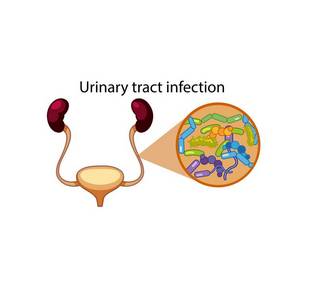Molecular Analysis of Urinary Tract Infection Outperforms Culture |
| 13 February 2020 |
|
Midstream urinary (MSU) culture for diagnosis of urinary tract infections (UTI) is based on two critical parameters: a recommended threshold of 105 CFU/ml for different clinical manifestations of UTI and the dismissal of mixed-growth cultures by default. The threshold can be diverse depending on the clinical manifestations of UTI, different virulence factors of the different bacterial strains and concentration depending on the fluid intake. Mixed-growth cultures are considered contaminations albeit polymicrobial infection is common [1]. In this study, results of MSU culture were compared to PCR amplification of parts of the 16S rRNA gene. In particular, the V5-V7 region of the 16S rRNA gene was amplified using DNA-free Mastermix 16S Basic (Molzym, Germany) and specified primers followed by sequencing of amplicons on an Illumina® MiSeq. Sathiananthamoorthy and colleagues [1] found that MSU culture failed to discriminate between samples from patients and the healthy control group. Cultures provided monomicrobial growth above the threshold for only 4/33 of the samples for clinically suspected UTI whereas 16S rRNA gene sequencing revealed bacteria in 32/33 of samples, including common uropathogens [1]. Moreover, culture results underestimated polymicrobial diversity in comparison to NGS analysis which even revealed a microbiome for urine from healthy patients. Their microbiome was dominated by Streptococcus while that of new patients was dominated by Enterobacteriaceae. Overall, the authors could reveal some weaknesses of the MSU culture for diagnosing UTI and reminded cautious interpretation of culture results. Note: Molzym’s DNA-free Mastermix 16S Basic used for the amplification of the 16S rRNA gene region prevents the amplification of reagent-borne contaminants. Prior to microbial DNA-free PCR reagents, a sample preparation including a host DNA depletion and contamination-free microbial DNA isolation (MolYsis™ technology) can further increase the sensitivity. |
| Reference |
|
[1] Sathiananthamoorthy S, Malone-Lee J, Grill K, Tymon A, Nguyen TK, Gurung S, Collins L, Kupelian AS, Swamy S, Khasriya R, Spratt DA, Rohn JL (2018) Reassessment of routine midstream culture diagnosis of urinary tract infection. J Clin Microbiol 57:e01452-18. (link) |
| Product Information Brochure |

